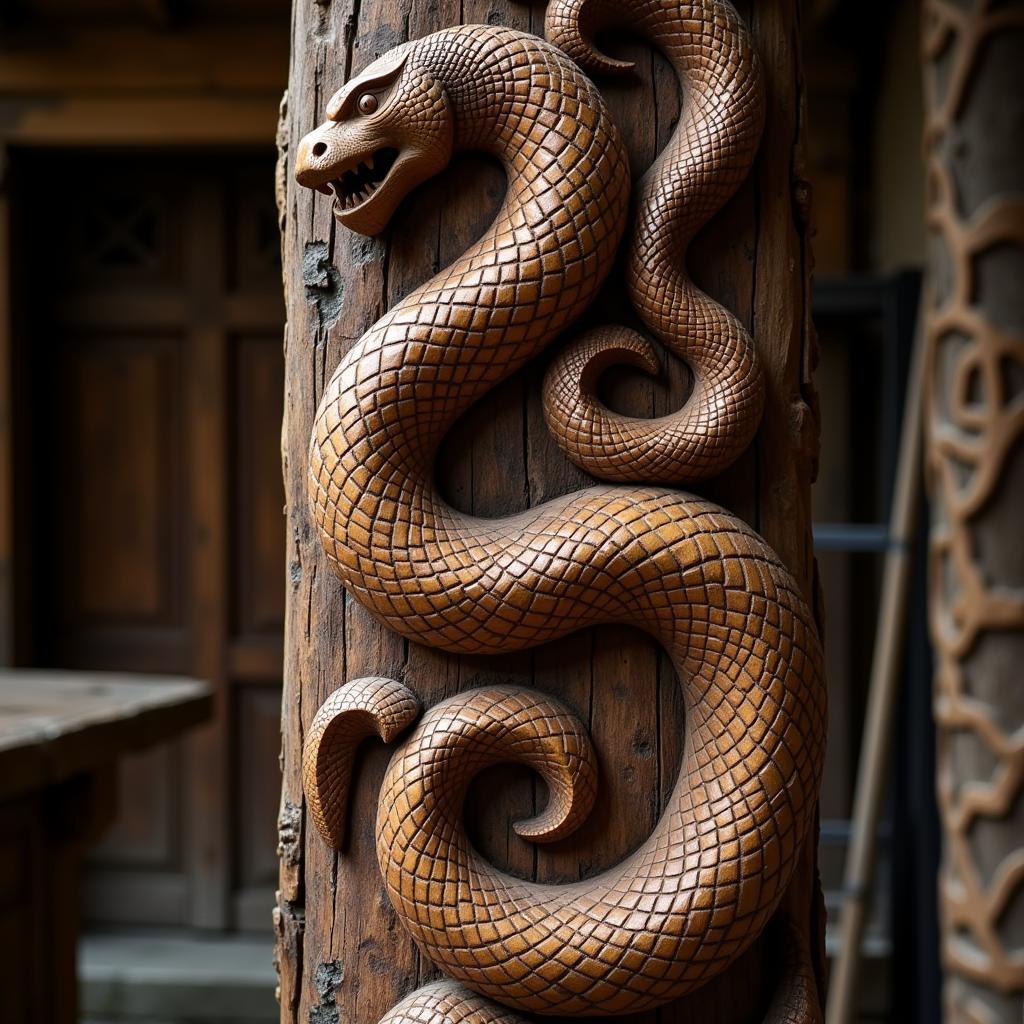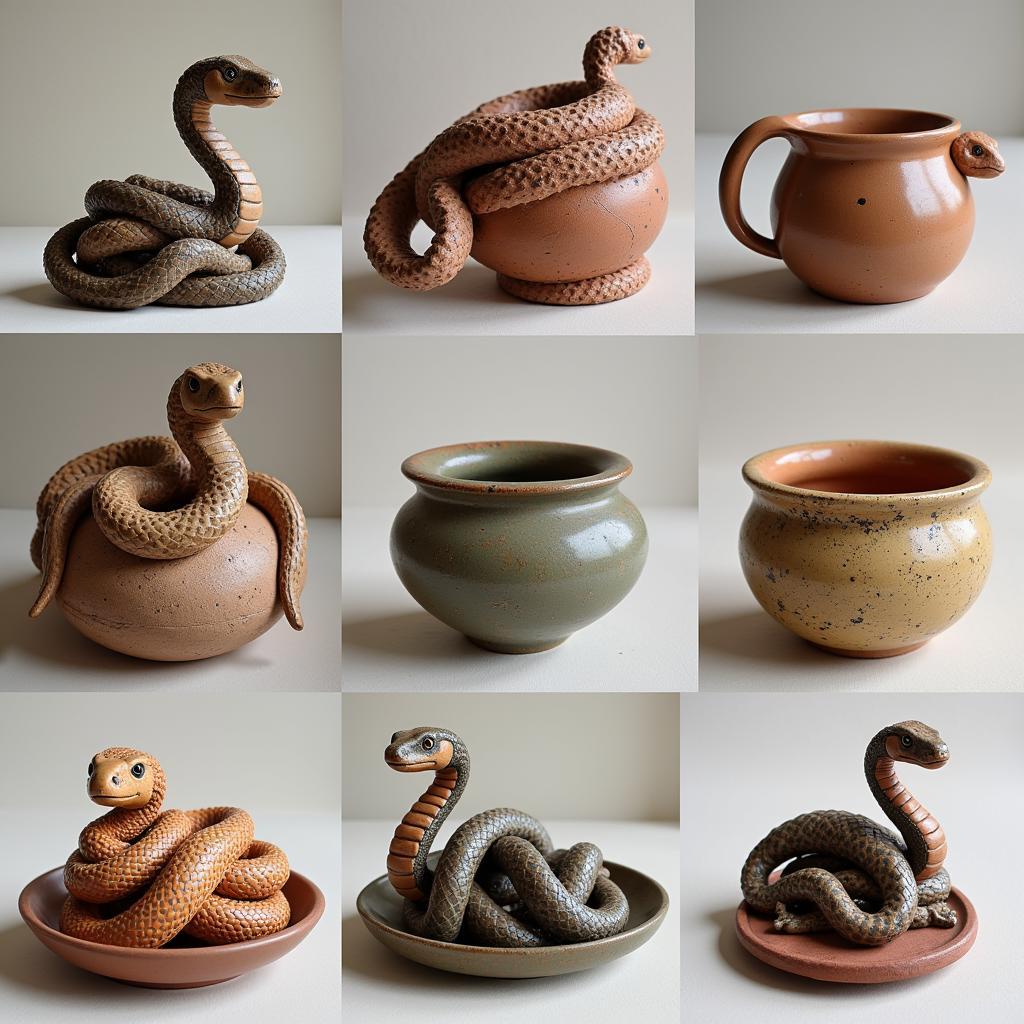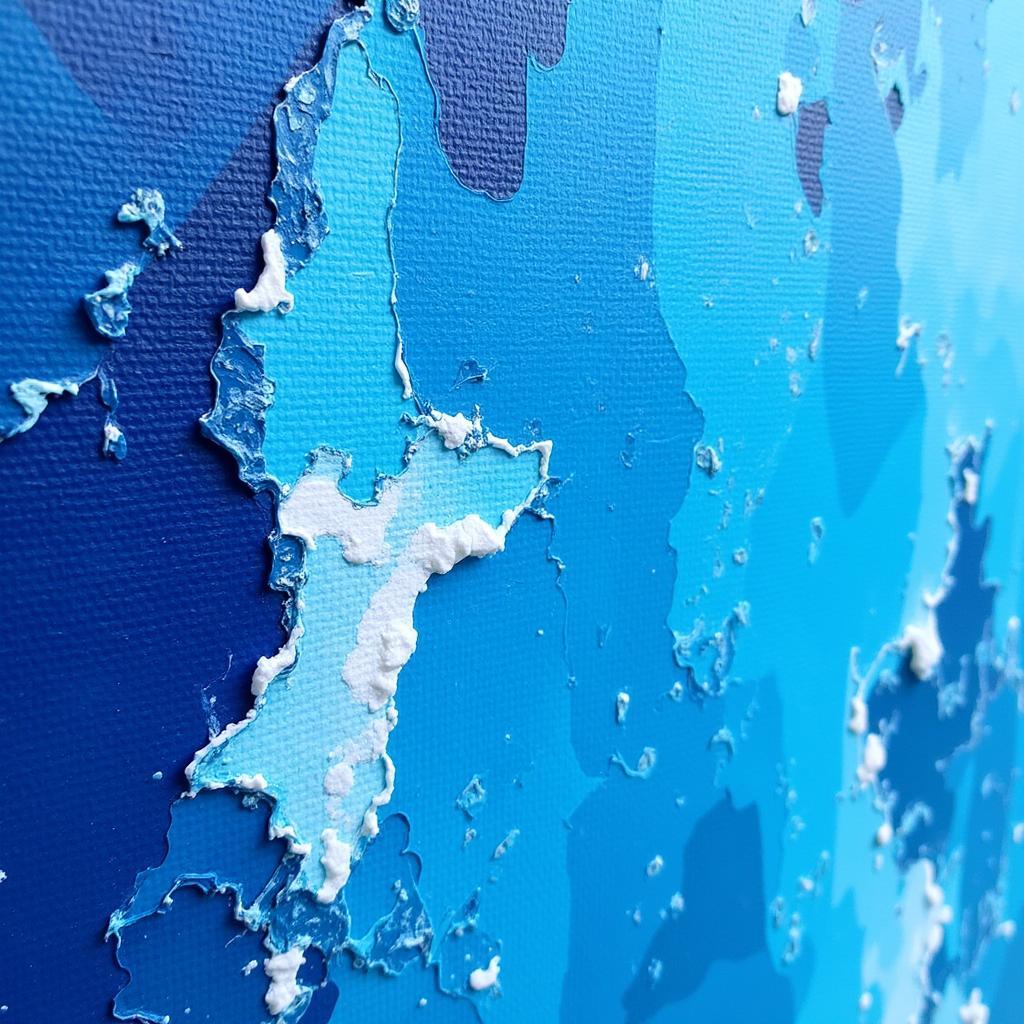Snake Folk Art: A Winding Journey Through Culture and Creativity
Snake Folk Art encompasses a diverse range of artistic expressions that celebrate the serpent’s presence in different cultures. From ancient cave paintings to intricate beadwork, the snake has served as a captivating muse, inspiring artisans for centuries. This article delves into the fascinating world of snake folk art, exploring its historical significance, cultural interpretations, and enduring appeal.
 Gỗ chạm khắc rắn dân gian
Gỗ chạm khắc rắn dân gian
Slithering Through Time: A History of Snake Imagery in Art
The snake’s sinuous form and enigmatic nature have captivated artists since prehistoric times. Evidence of this fascination can be seen in ancient cave paintings, where snakes are often depicted alongside other animals and human figures. These early artistic representations offer glimpses into the beliefs and rituals of our ancestors, suggesting that snakes held a prominent place in their worldview. In ancient Egypt, for example, the cobra was revered as a symbol of royalty and divine power, while in many indigenous cultures, snakes were associated with healing, transformation, and the cycle of life and death.
As civilizations developed, so too did the artistic representations of snakes. In ancient Greece, the serpent was associated with Asclepius, the god of medicine, and its image adorned healing temples and medical instruments. In Hinduism, the serpent god Naga represents cosmic energy and the cycle of creation and destruction. From intricate mosaics in Roman villas to elaborate sculptures in Hindu temples, snakes continued to slither their way into diverse artistic traditions, reflecting the cultural and religious beliefs of their time.
 Vải dệt họa tiết rắn dân gian
Vải dệt họa tiết rắn dân gian
Uncoiling the Symbolism: Cultural Interpretations of the Snake
The snake holds a complex and often contradictory symbolism in different cultures. In some traditions, it is revered as a benevolent deity associated with fertility, wisdom, and healing. In others, it is feared as a creature of darkness and chaos, representing temptation, deceit, and death. This duality of meaning adds to the snake’s allure, making it a powerful and enduring motif in folk art.
In many Native American cultures, the snake is seen as a symbol of transformation and renewal, shedding its skin to emerge anew. This cyclical process of shedding and regrowth resonates with themes of rebirth, healing, and spiritual awakening. In contrast, the serpent’s role in the biblical story of Adam and Eve has led to its association with temptation, sin, and the fall from grace in Christian traditions. This duality of meaning is reflected in the diverse ways snakes are portrayed in folk art, from intricate beadwork designs celebrating their beauty and power to cautionary tales depicted in woodcarvings and pottery.
From Beads to Baskets: Exploring the Diverse Forms of Snake Folk Art
Snake folk art encompasses a wide range of artistic mediums, from traditional crafts like pottery, weaving, and woodcarving to more contemporary forms of expression like jewelry making and mixed media art. The materials used vary depending on the cultural context and artistic tradition, but the common thread that unites these diverse forms is the celebration of the snake’s beauty, power, and symbolism.
- Beadwork: In many indigenous cultures, intricate beadwork designs featuring stylized snake motifs adorn clothing, accessories, and ceremonial objects. These designs often incorporate vibrant colors and geometric patterns that reflect the cultural aesthetics and spiritual beliefs of the community.
- Pottery: From ancient Greek vases to Native American pottery, snakes have slithered their way onto ceramic surfaces for centuries. These depictions can be realistic or stylized, often incorporating cultural motifs and symbols.
- Woodcarving: In many cultures, woodcarvings of snakes serve as protective totems, spiritual guardians, or decorative elements in homes and sacred spaces. These carvings can range from simple, stylized representations to highly detailed and lifelike sculptures.
- Textiles: Woven or embroidered snake motifs often adorn traditional textiles like rugs, blankets, and clothing. These designs can be purely decorative or carry symbolic meaning, representing cultural identity, spiritual beliefs, or personal narratives.
 Gốm sứ họa tiết rắn dân gian
Gốm sứ họa tiết rắn dân gian
Conclusion: The Enduring Allure of Snake Folk Art
Snake folk art offers a fascinating glimpse into the diverse ways humans have interacted with and interpreted the natural world throughout history. From ancient cave paintings to contemporary jewelry designs, the snake continues to captivate artists and audiences alike, its sinuous form and enigmatic nature inspiring endless creative interpretations. By exploring the rich history, cultural significance, and diverse forms of snake folk art, we gain a deeper appreciation for the enduring power of this captivating creature and its enduring influence on human imagination.




